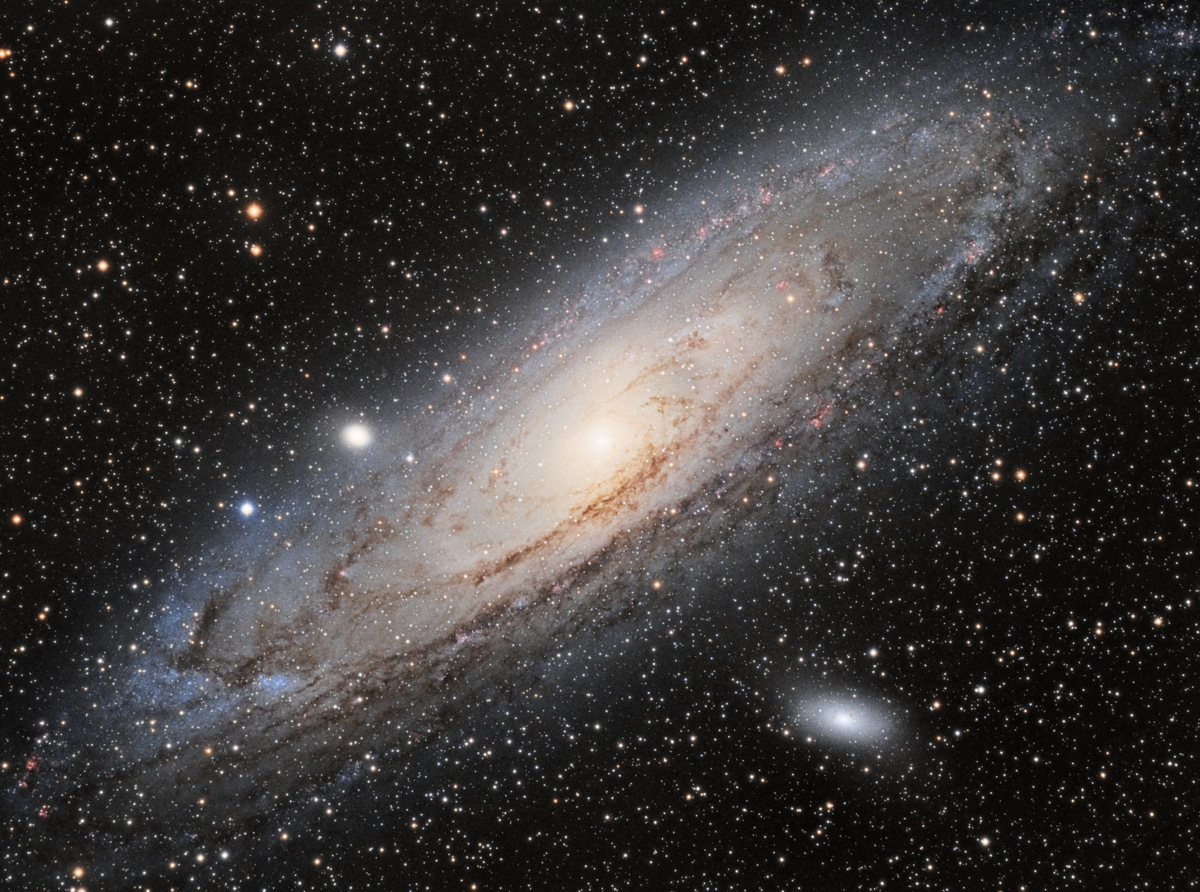
Astronomers may finally have detected a signal of dark matter, the mysterious and elusive stuff thought to make up most of the material universe.
While poring over data collected by the European Space Agency's XMM-Newton spacecraft, a team of researchers spotted an odd spike in X-ray emissions coming from two different celestial objects — the Andromeda galaxy and the Perseus galaxy cluster.
The signal corresponds to no known particle or atom and thus may have been produced by dark matter, researchers said. [Gallery: Dark Matter Throughout the Universe]

"The signal's distribution within the galaxy corresponds exactly to what we were expecting with dark matter — that is, concentrated and intense in the center of objects and weaker and diffuse on the edges," study co-author Oleg Ruchayskiy, of the École Polytechnique Fédérale de Lausanne (EPFL) in Switzerland, said in a statement.
"With the goal of verifying our findings, we then looked at data from our own galaxy, the Milky Way, and made the same observations," added lead author Alexey Boyarsky, of EPFL and Leiden University in the Netherlands.
Dark matter is so named because it neither absorbs nor emits light and therefore cannot be directly observed. But astronomers know dark matter exists because it interacts gravitationally with the "normal" matter we can see and touch.
Researchers have proposed a number of different exotic particles as the constituents of dark matter, including weakly interacting massive particles (WIMPs), axions and sterile neutrinos, hypothetical cousins of "ordinary" neutrinos (confirmed particles that resemble electrons but lack an electrical charge).
Breaking space news, the latest updates on rocket launches, skywatching events and more!
The decay of sterile neutrinos is thought to produce X-rays, so the research team suspects these may be the dark matter particles responsible for the mysterious signal coming from Andromeda and the Perseus cluster.
If the results — which will be published next week in the journal Physical Review Letters — hold up, they could usher in a new era in astronomy, study team members said.
"Confirmation of this discovery may lead to construction of new telescopes specially designed for studying the signals from dark matter particles," Boyarsky said. "We will know where to look in order to trace dark structures in space and will be able to reconstruct how the universe has formed."
You can read the paper at the online preprint site arXiv: http://arxiv.org/pdf/1402.4119v1.pdf
Follow Mike Wall on Twitter @michaeldwall and Google+. Follow us @Spacedotcom, Facebook or Google+. Originally published on Space.com.
Join our Space Forums to keep talking space on the latest missions, night sky and more! And if you have a news tip, correction or comment, let us know at: community@space.com.

Michael Wall is a Senior Space Writer with Space.com and joined the team in 2010. He primarily covers exoplanets, spaceflight and military space, but has been known to dabble in the space art beat. His book about the search for alien life, "Out There," was published on Nov. 13, 2018. Before becoming a science writer, Michael worked as a herpetologist and wildlife biologist. He has a Ph.D. in evolutionary biology from the University of Sydney, Australia, a bachelor's degree from the University of Arizona, and a graduate certificate in science writing from the University of California, Santa Cruz. To find out what his latest project is, you can follow Michael on Twitter.
